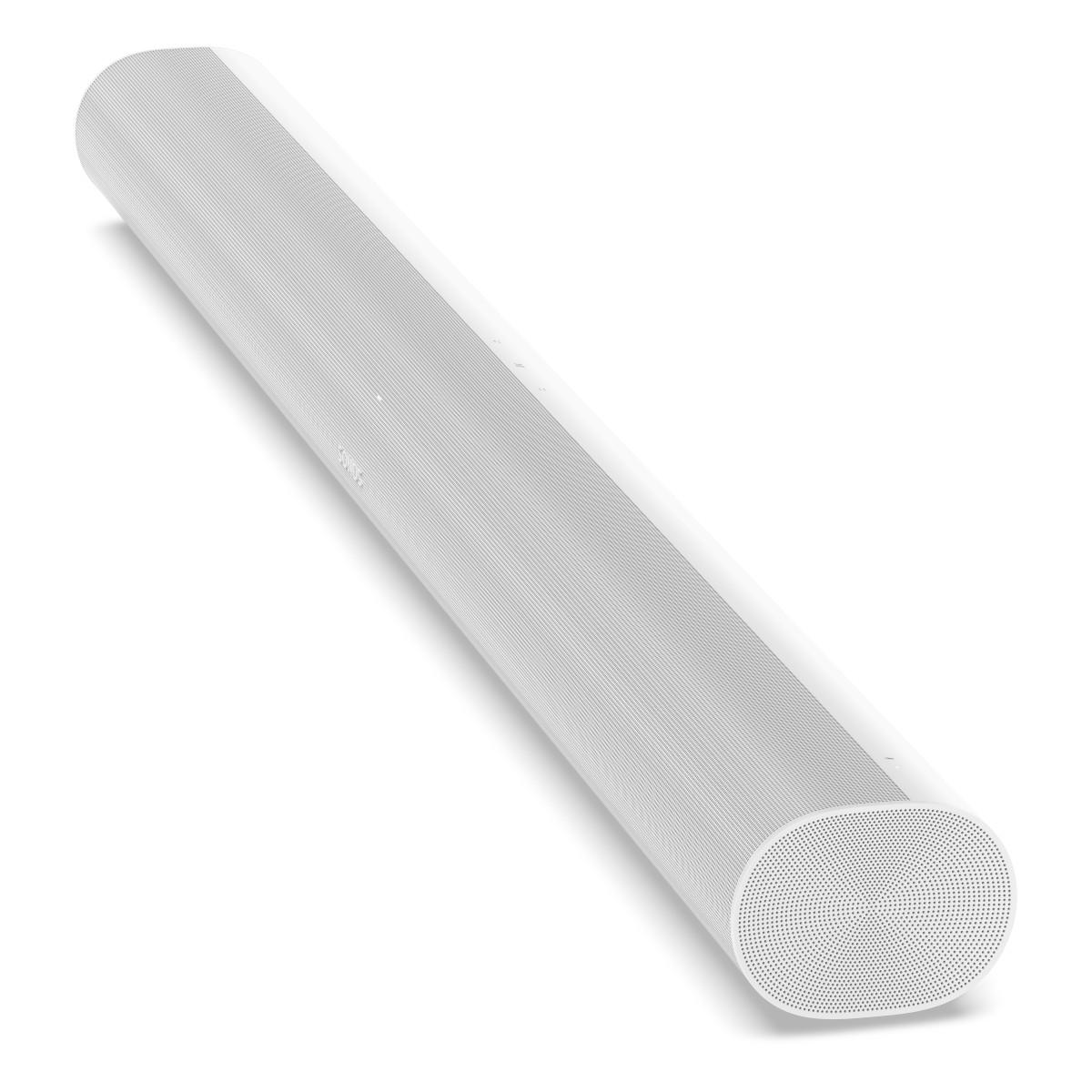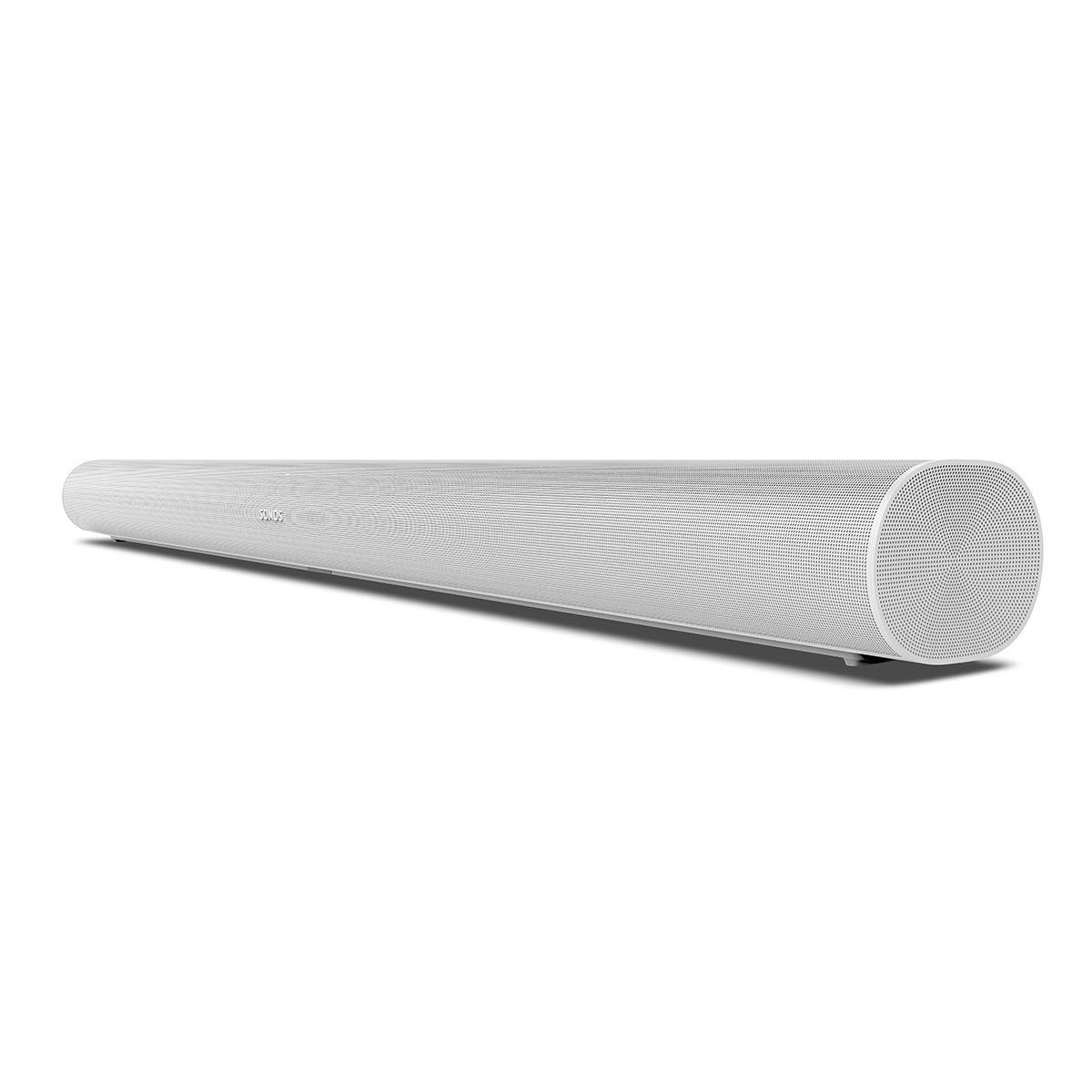
If you're looking to dramatically improve your TV's audio without the complexity of a full home theater system, today's premium soundbars offer impressive performance in sleek packages. Let's dive deep into two popular options: the Bose Smart Ultra Soundbar ($699) and the Sonos Arc ($564).
Today's premium soundbars are technological marvels compared to their predecessors. They use advanced digital signal processing (which shapes and enhances audio in real-time) and precisely arranged speaker arrays to create immersive sound from a single unit. Both of these models support Dolby Atmos, a surround sound technology that adds height channels to create a three-dimensional sound field - imagine hearing a helicopter truly sound like it's flying overhead.
The Sonos Arc was released in 2020 and has received multiple firmware updates to enhance its performance. It replaced the older Sonos Playbar, bringing significant improvements in processing power and speaker configuration. The Bose Smart Ultra, released in 2023, represents the latest in Bose's soundbar evolution, featuring their newest AI-powered audio processing.
The Sonos Arc delivers a more balanced sound signature with better bass extension - meaning you'll hear more of the deep, low frequencies without needing a separate subwoofer. Its 11-driver array (individual speakers within the unit) creates a wider and taller soundstage, which is especially noticeable with Dolby Atmos content.
The Bose Smart Ultra takes a different approach, focusing on clarity and detail in the mid-range frequencies where voices live. Its brightness can make dialogue pop, but some might find it less natural for music playback.

Here's where things get interesting. The Sonos Arc creates a more convincing height effect, making sounds appear to come from above more distinctly. This is particularly noticeable in movies with lots of overhead action, like aviation scenes or rainstorms. The Bose handles Atmos content well but doesn't quite match the Arc's vertical separation.
Both bars excel here but in different ways. The Bose Smart Ultra uses AI-powered processing to enhance dialogue without affecting other sounds - particularly useful for late-night viewing when you need to keep volumes lower. The Sonos relies more on traditional processing but still delivers excellent clarity, especially when using its Speech Enhancement feature.

Both soundbars support Amazon Alexa and Google Assistant, but Sonos adds its own voice control system specifically designed for audio control. In practice, I've found the Sonos voice control more reliable for music-specific commands, while both handle basic controls equally well.
Sonos's Trueplay system (which uses your iPhone's microphone to measure and adjust for room acoustics) provides more sophisticated room correction than Bose's ADAPTiQ system. However, Trueplay only works with iOS devices, while ADAPTiQ works with the included headset regardless of your phone type.
This is where Sonos shows its roots as a multi-room audio pioneer. The Arc integrates seamlessly with other Sonos speakers, making it easy to expand into a whole-home audio system. The Bose works with other Bose speakers but offers a more limited multi-room experience.

Both soundbars connect primarily through HDMI eARC (enhanced Audio Return Channel), which allows for high-quality audio transmission from your TV. They both support Wi-Fi and various streaming services, though Sonos has a slight edge in streaming service compatibility.
Setup experiences differ significantly:
At $564, the Sonos Arc offers better value for most users, despite being an older model. Its superior bass performance, better Atmos effects, and more robust ecosystem make it a compelling choice. However, the Bose Smart Ultra's newer AI-powered features and excellent dialogue clarity might justify its $699 price for users primarily focused on TV and movie watching.

In my experience testing both units in various room sizes:
Choose the Bose Smart Ultra if:
Choose the Sonos Arc if:
Both soundbars represent excellent choices in the premium segment, but they serve slightly different users. The Sonos Arc remains the more well-rounded option and better value, while the Bose Smart Ultra excels in specific use cases, particularly around dialogue clarity and TV watching.
For most users, I recommend the Sonos Arc due to its superior overall performance and lower price point. However, if you struggle with dialogue clarity in movies or TV shows, or if you prefer a brighter sound signature, the Bose Smart Ultra might be worth the premium price.
| Bose Smart Ultra Soundbar ($699) | Sonos Arc ($564) |
|---|---|
| Release Date - Indicates technology generation and maturity | |
| 2023 (newer tech, less refined) | 2020 (mature platform, well optimized) |
| Audio Configuration - Impacts sound quality and immersion | |
| 5.1.2 channels, custom-designed drivers | 5.0.2 channels, 11 drivers (3 tweeters, 8 woofers) |
| Dolby Atmos Performance - Critical for immersive movie audio | |
| Good height effects, moderate separation | Excellent height effects, superior spatial separation |
| Dialogue Enhancement - Important for TV/movie clarity | |
| AI-powered dialogue mode, excellent clarity | Traditional processing, very good clarity |
| Bass Response - Affects fullness of sound | |
| Moderate bass, may need subwoofer | Strong bass response, better standalone performance |
| Room Calibration - Optimizes sound for your space | |
| ADAPTiQ (works with included headset) | Trueplay (requires iOS device) |
| Smart Features - Adds convenience and control options | |
| Alexa, Google Assistant | Alexa, Google Assistant, Sonos Voice Control |
| Ecosystem Expandability - Future system growth potential | |
| Limited to Bose products | Extensive Sonos ecosystem compatibility |
| Physical Connections - Affects setup flexibility | |
| HDMI eARC, Optical | HDMI eARC, Ethernet |
| Wireless Connectivity - Streaming and control options | |
| WiFi, Bluetooth, AirPlay 2 | WiFi, AirPlay 2 (no Bluetooth) |
| Room Size Suitability - Matches product to space | |
| Best for small to medium rooms | Effective in small to large rooms |
| Multi-room Capability - Whole-home audio potential | |
| Basic multi-room with Bose products | Advanced multi-room, industry-leading |
| Dimensions - Physical space requirements | |
| 34.5" x 4.5" x 3.5" (more compact) | 45" x 4.5" x 3.4" (longer) |
| Weight - Installation considerations | |
| 7.5 lbs (lighter) | 13.78 lbs (heavier) |
The Sonos Arc ($564) generally performs better for movies with superior Dolby Atmos effects and better bass response. However, the Bose Smart Ultra ($699) excels at dialogue clarity, which some viewers may prefer.
The Sonos Arc offers better value at $564 compared to the Bose Smart Ultra at $699, providing superior overall sound quality and more expansion options.
Both can perform well without a subwoofer, but the Sonos Arc has better built-in bass response. The Bose Smart Ultra may benefit more from adding a subwoofer for deeper bass.
The Sonos Arc delivers more balanced music playback with better bass response and fuller sound. The Bose Smart Ultra has a brighter sound signature that some may find less natural for music.
Yes, both support Amazon Alexa and Google Assistant. The Sonos Arc adds its own voice control system specifically for audio functions.
The Bose Smart Ultra offers a simpler initial setup process, while the Sonos Arc requires more configuration but provides more customization options.
Both perform well for gaming, but the Sonos Arc offers better spatial audio and bass response, while the Bose Smart Ultra provides clearer dialogue in story-driven games.
The Sonos Arc performs better in larger spaces due to its more powerful driver array and better sound projection. The Bose Smart Ultra is more suited to small and medium-sized rooms.
The Bose Smart Ultra offers both Bluetooth and WiFi connectivity, while the Sonos Arc uses WiFi only but includes AirPlay 2 support.
Both soundbars work best with HDMI eARC connections, which come included. The Bose Smart Ultra and Sonos Arc both include optical adapters for older TVs.
The Sonos Arc offers more expansion options within its ecosystem, including wireless surrounds and subwoofers. The Bose Smart Ultra has more limited expansion options.
The Bose Smart Ultra excels at TV show playback with its AI-enhanced dialogue clarity, though the Sonos Arc still performs very well and offers better overall sound quality.
We've done our best to create useful and informative comparisons to help you decide what product to buy. Our research uses advanced automated methods to create this comparison and perfection is not possible - please contact us for corrections or questions. These are the sites we've researched in the creation of this article: techradar.com - bose.com - bestbuy.com - tomsguide.com - pcrichard.com - rtings.com - bose.com - boselatam.com - avsforum.com - bose.com - whathifi.com - soundandvision.com - en.community.sonos.com - cnet.com - worldwidestereo.com - abt.com - creativeaudio.net - target.com - sonos.com - worldwidestereo.com - businessinsider.com - en.community.sonos.com - youtube.com